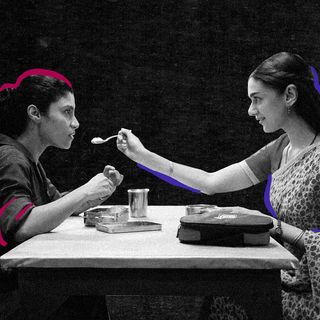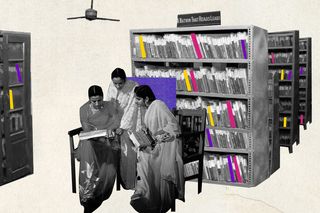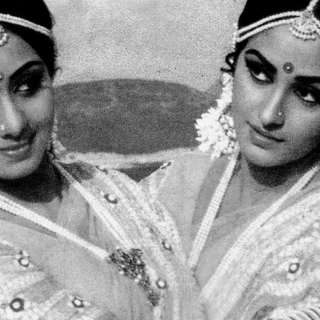
Public Libraries Once Made Knowledge, Social Debate Accessible. Can Local Projects Revive Them?
From street libraries to books in community fridges, new initiatives highlight the social worth of libraries as public spaces.

In December last year, a 76-year-old Mahendra felt like a child when he first laid his eyes on books, the newest entrants to Bansa Village. Bansa is a small community in the heart of Uttar Pradesh, home to some 5,000 people. For Mahendra, education had remained a pipe dream, since money was always a restricting factor; many among his family and friends felt it best to make no claims to learning. They had gone decades without feeling they were missing out on anything.
Until last year, when Mahendra entered a two-room structure; the facade, which looked oddly like a school, bore the name Bansa Community Library and Resource Center. Mahendra felt a childish joy and excitement: Hindi books, names he had heard of, were now within his reach. Over the weeks, he rummaged through bookshelves, starting from Premchand’s essays to Mahadevi Varma’s poems. The library is not going anywhere, the founder jokes with him, but he insists on borrowing at least four books a week.
A similar story is playing out in other corners: in South Kolkata, a couple started storing books in a community fridge and erected the free Patuli Street Library during the pandemic, to “inculcate reading habits” and “create a book-loving community”; in Karnataka, a woman goes from house to house offering a collection of books. Older initiatives such as Bookworm started out as a resource center in Panaji, Goa, 16 years ago with the agenda of making learning resources accessible and is now delivering books to readers during the pandemic. Reading and learning seem to be on the move, as other unconventional setups make books freely accessible and take knowledge to the people.
These projects then not only plug the gap left by dwindling public libraries but also highlight the social role public libraries play in cultivating important sites for conversation, debate, and social inclusivity.
“We wanted a place in a village where people can come anytime,” Jatin Lalit, the founder of the Bansa library and a fifth-year law student, says. “Where they don’t need to enroll themselves, they don’t need to pay anything. They can come and sit, talk, read newspapers, and surf books.”
*
In India, there is one rural library for every 11,500 people and one urban library for more than 80,000 people, according to the 2011 census — the first time the number of libraries was officially tallied. “However, there is no precise information on the functionality and level of service capabilities of these libraries,” says Preedip Balaji, a researcher and library consultant at the Indian Institute for Human Settlement (IIHS), Bengaluru. “The rural libraries could be a room with a few books, while others could be running through the support of private donors or NGOs.”
But why have people and the state failed to recognize the value of libraries and their role in our social infrastructure? Libraries have died down in popularity for a confluence of three reasons: waning state investment, dying popularity among the public, and the emergence of the internet as an efficient, faster alternative.
Related on The Swaddle:
Balaji co-wrote a paper titled “A Policy Review of Public Libraries in India,” exploring the poor conditions coupled with no concerted government intervention. In India, library management is a state subject — and most states do not have a legislation or uniform set of guidelines concerning the functioning of these social institutions. The total investment in libraries has also gone down — state taxes including the library cess, a surcharge of property tax paid to the local government, city corporation, or village panchayat, was meant to finance them. But experts note the institution suffers from a lack of transparency and accountability.
In Bihar’s West Champaran district, the Maharaja Harendra Kishore Singh District Library, named after the last ruler of colonial Bihar, was established in 1905. Some 108 years later, all 12,000 of its books are now in tatters and it is managed by a librarian who is paid Rs. 700 per month, according to a 2013 Livemint report. Many other district libraries are living on a sustenance diet, too, but notably, they continue to be frequently visited by students to study for exams or as a space for leisure.
Beyond mismanagement and lack of investment is also the pernicious process of development. A more recent example is Bihar’s Khuda Bakhsh Oriental Public Library. Built in 1905 and located in the heart of Patna, the library is now due to be razed to make space for a flyover. “This library is of world heritage value. It has the largest collection of Islamic manuscripts in the country and other important books and documents as well,” its librarian told Al Jazeera.
While capitalist objectives sideline these institutions, the weaning interest by an audience who prefers the internet to books is cited as another factor making things worse. However, the common argument positing the internet as a formidable adversary to libraries ignores the reality of a digital divide. Overall, only 14.4% of rural households have internet facilities, and even fewer — 4.4% of households — have a computer, according to the recent National Family Health Survey.
“We thought technology will break the vicious cycle of lack of access within communities,” Balaji notes. “and help connect everybody in a commonplace. But technology came and these people have capitalized more on literature, making them into products.” More public libraries will mean more ways to connect to the internet (even a public library has computers) and even people who can’t read surf the internet in their regional language. Libraries are essential as any other thing — and the gap in accessing information and knowledge continues to widen as people overlook their social worth.
It speaks to a larger problem in India — a lack of investment in public spaces. “You’ve got malls for the rich, private parks for the rich,” Ajit Pyati, professor of media and information science at the University of Western Ontario, Canada, notes. “What are the most less well-to-do people left with?”
*
This idea of information and internet technology versus libraries is a false dichotomy, Pyati says. While public libraries represent knowledge and information at the very core, they need to be thought of as socially inclusive spaces, places for communities to gather. The founding principle behind a library, Eric Klinenberg argues in LitHub, is to offer people free, open access to our “shared culture and heritage, which they can use to any end they see fit.” But this principle may be out of sync with the urbanism and commercial sensibility that persists in our age.
This idea of information and internet technology versus libraries is a false dichotomy.
Pyati refers to the social function of public libraries, which has been documented through the years and can be understood to fulfill these roles: bolstering social inclusion, higher information literacy and knowledge sharing, higher academic success, increase in individual well-being, and community engagement.
Titled “Libraries: Gateways to Knowledge,” a 2007 report describes the benefits and roles of libraries: “Libraries have a recognized social function in making knowledge publicly available to all,” it says. “They serve as local centers of information and learning, and are local gateways to national and global knowledge.”
Related on The Swaddle:
Respectfully Disagree: Is Social Media Killing or Elevating Public Discourse?
Public libraries become open spaces that offer a safe refuge to participants of a community. The sites function as literary salons, public commons for repose and safety, and ideological safe houses. “The public library has a vital role in providing possible inclusion services for all excluded groups in the communities,” Pyati wrote in his paper titled “Public Library Revitalization in India,” examining the factors. “… No other public service is better situated than the public library to develop an environment of social inclusion. The public libraries are the heart and soul of any communities they serve, allowing everybody, irrespective of their caste, religion, or background.”
Preedip Balaji agrees. “Our neighborhoods,” he says, “don’t have social spaces. Public spaces, then, should stand tall and cater to the people at a very local level.” For migrant workers, immigrants, oppressed groups who occupy a particular locality or city, anywhere — libraries exist as a space to go take shelter, to engage with each other, and learn in a setting conducive to individual well-being.
“Libraries are places that should uplift communities as equalizers of society to break the social barriers and social divides we have.”
In 1925, Rabindranath Tagore started the Chalantika Library, chalantika being Bengali for ‘library on the move.’ While the official location for this library was Sriniketan, the revolutionary idea of a mobile library took books to different villages by different means: they walked, used bicycles, and even used bullock-drawn carts. These also became sites for “lantern lectures,” or lectures held by the light of lanterns in villages on topics of health, economic, and social development. Together, it was a “message of change, progress and upliftment of rural life,” Nimai Chand Saha and Keshab Chandra Sinha argue in a paper. Social infrastructures arguably set the stage for inclusive social participation, and the library is among the most critical forms of social infrastructure that we have.
Moreover, research shows the presence of public libraries is linked to higher literacy. In his paper, Balaji and co-authors Vinay M. S. and Mohan Raju presented a pattern in states with lower literacy rates — all of them did not have library legislation or an official government policy around public libraries until recently. (19 states still don’t have common legislation.) On the contrary, cities that were transparent about their public library spending and information have consistently recorded a high literacy rate, such as Vellore, in Tamil Nadu. “The southern states, especially Tamil Nadu and Karnataka, have always had higher levels of public library development, with around 2,000 libraries each (see data below), far higher than the numbers in Bihar, which has a larger population,” the authors note.
Public libraries also play a more visceral role in personal development. The major objectives of libraries are not just providing books; an individual builds a relationship with these spaces. Public libraries create what Pyati calls a “third space,” a place away from the work environment, away from home, a place where you can just go and be yourself, meet friends, or just enjoy some quiet time. As a public room and social and physical meeting place in the digitized age, the library becomes a free space, Pyati explains.
Theoretically and practically, public spaces let a lot of people in non-commercially in a society where very few places are freely available. The legacy of inequality, casteism, and feudalism create a deceptively populous specter; you have to consume something to inhabit any space, which limits the people who can be there in the first place. Perhaps it’s because the founding principle behind the library — that all people deserve free, open access to our shared culture and heritage, which they can use to any end they see fit — is out of sync with the market logic that dominates our time. This leaves behind few public spaces truly democratic in its approach.
The discourse around the library as public common perches on the idea of knowledge and who has access to it. Libraries become a euphemism for inclusivity and access to information. What does the lack of these spaces or lack of interest to protect these spaces then say? Knowledge, as an ideological tool with the potential to bridge equilibrium, is cultivated for power, Balaji notes; reframing the disparity between the have and have-nots.
The rise of urbanism has further stirred the demand for gated libraries, cafes, or coffee shops, giving rise to an elitist institution, experts say. So while the top few are able to spare some hundreds merely to occupy a given space, people without these means are instinctively cut off from knowledge-sharing activities. Knowledge then becomes a commodity, segregated by access, where people with resources can access it and people without can’t. The cycle of oppression ends up being perpetuated; gated libraries are ghettoizing knowledge. Public libraries are declining, excluding people without access to the internet, makes knowledge a commodity.
“Most libraries in urban spaces are gated — naturally, laborers or farmers can’t step inside,” says Aameen Amitoj. Amitoj co-founded the make-shift library that organically took shape at the recent farmers’ protest. Under Pillar 761, at the Tikri border, the library became an important site for bringing books closer to people. It carried books in Punjabi, Hindi, and English; with farmers and protesters eagerly swiping books about revolt, poems around resistance by the likes of Bhagat Singh, Ambedkar, Che Guevara, and other revolutionaries. The community library is thus a custodian of knowledge and ideas, reaching out to people when people can’t reach it — similar to others that took shape in last year’s Shaheen Bagh or Occupy Wall Street from the last decade.
“The concept of effective public space seems to be lacking in the public context,” says Ajit Pyati. In Italy, a functioning experiment transformed public libraries and museums into night shelters for the homeless, indicating the social worth these open spaces have. He suggests building on this idea to extend the role of community libraries as integrated spaces with more facilities, such as canteens and telephone booths.
“The indigenous Indian idea of the public space, of the common good — how can that be mapped within the libraries?” Pyati adds. “That’s a question worth asking, and I’m not sure people are looking at that now.”
The new initiatives are thus a major turn in the Indian public library development, and they also work to create accessible sites of social discourse. If knowledge exists as a commodity that people in power regulate, public and increasingly make-shift libraries are a way to challenge this dynamic.
“Whenever books are in free movement, communities emerge and people interact,” Amitoj adds. “These things develop very dynamically and organically — it feels like democracy in action and in power as collective consciousness grows together.”
Saumya Kalia is an Associate Editor at The Swaddle. Her journalism and writing explore issues of social justice, digital sub-cultures, media ecosystem, literature, and memory as they cut across socio-cultural periods. You can reach her at @Saumya_Kalia.
Related


Can We Move On: From the Sexless, Sacrificing Divorced Woman Trope
